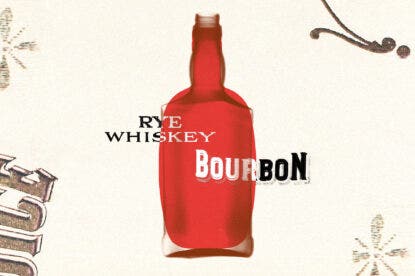In the film Sideways, Maya—played by Virginia Madsen—explains why she loves wine so much.
“I like how wine continues to evolve, like if I opened a bottle of wine today it would taste different than if I’d opened it on any other day, because a bottle of wine is actually alive,” she says. “And it’s constantly evolving and gaining complexity. That is, until it peaks. And then it begins its steady, inevitable decline.”
The sentiment is so true, but she forgot to mention one thing: Wine only evolves, gains complexity and hits its peak if it is being properly stored. Otherwise that inevitable decline will rear its ugly head a lot sooner than desired.
But there are many misconceptions about proper wine storage and the climate conditions that are necessary to preserve bottles. Here, we debunk some common wine storage myths. These are the five enemies of wine.
Temperature
Heat is Public Enemy Number One for wine. All wine should be stored at the same temperature, preferably between 53 and 57°F. This is the ideal temperature for red, white, sparkling and fortified wines to age and evolve, if it is in their DNA to do so. A note: It’s only serving temps that vary for whites, reds and sparkling.
Wine that has been exposed to warm temps can often take on a cooked or stewed characteristic, like any fruit product exposed to extreme heat. If it gets too warm over a longer period of time, the heat can push the cork out of the bottle and lead to oxidation. This process can turn the wine brown in color, and potentially eliminate any aromas of fruit and potentially result in notes of vinegar and even Sherry.
Lack of Humidity
Lying wine on its side will keep the cork moist enough for a couple of years, but for longer-term storage, a consistent relative humidity between 50 and 80% is necessary in order to avoid the corks from drying out. Once that occurs, harmful air can sneak into the bottle leading to potential oxidation as well.
Light
Extended exposure of UV light can wreak havoc on a bottle of wine. UV rays destroy tannins, which play an important role in preventing oxidation that can prematurely age wine. It can also cause the wine to become cloudy and give off strong odors and off-flavors.
Vibration
As a wine ages, it naturally produces various solids and sediment, much of which are the byproducts of fermentation. Vibration of the wine may artificially accelerate the production of solids, expediting the maturation process as well as generating minimal heat that causes the corks to shift. Having wine move as little as possible is ideal for long-term storage.
Odor
Strong, sustained odors can negatively alter the flavor of wine. This can come from aromatic wood, stains or lacquer or even pungent odors in a room where the wine sits such as cigars, garlic, strong spices or even household or garage chemicals. Therefore, keeping your wine in the kitchen or garage—assuming it’s not in a wine cellar—is probably not the best idea.
The Best Way to Store Your Wine
There are wine storage solutions for every wine collection and budget, it all just depends on how long you are aging your wine and for what reason.
If you are just looking to keep wine at a nice, cool temperature and are going to consume your wine within a year or so, the most basic wine coolers will do just fine. But if you have some bottles that you are planning on enjoying with your children for their birthdays decades down the road, then you want to make sure that you have a wine cellar that will protect against all of those enemies of wine.
To get started finding a wine fridge that suits your needs, explore our 12 Best Wine Cellars for Every Kind of Collector.
Published: November 10, 2022















